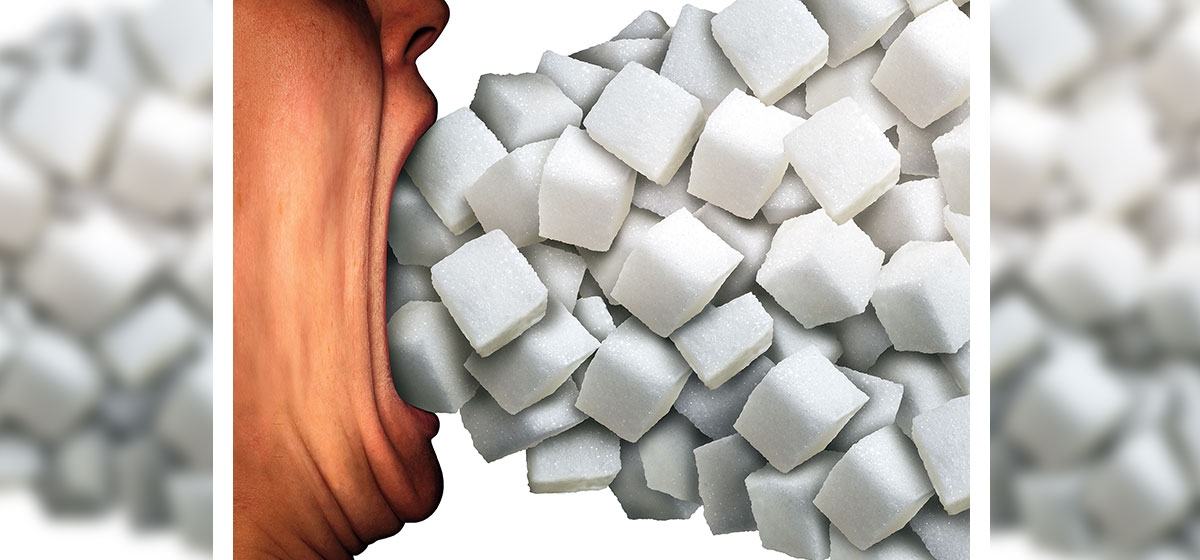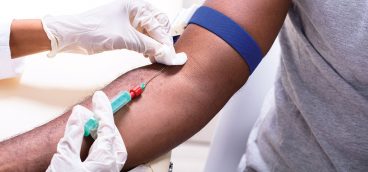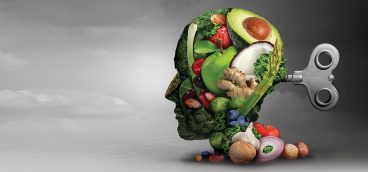The Trouble with Sugar

As a liver specialist for more than 25 years, Dr. Michael Babich has seen a seismic shift in his practice. No longer are viruses or chronic alcoholism destroying the livers of most of his patients at Allegheny Health Network. Now, it’s the overconsumption of fructose—an industrialized form of sugar that has crept into the American diet and can be found in everything from soda to Heinz ketchup.
In Pittsburgh and across the nation, an estimated 40 percent of Americans have an accumulation of fatty deposits, not just around the belly, but in the liver. The fat ends up there, Dr. Babich explains, because the liver can only convert excess fructose to fat. Left unchecked, these fatty deposits can progress to NASH (nonalcoholic steatohepatitis) that leaves the liver scarred. “It is estimated in the next five to 10 years, NASH is going to take over as the No. 1 cause of liver transplant and liver cancer in this country so the numbers are just skyrocketing,” Dr. Babich says.
To get a sense of the scope, at least 20 drugs are being investigated to treat NASH. “There is a huge amount of money and resources going into treatment for this.” A few of these drugs are in Phase 3 trials, the last step before FDA approval, so they could be available within the next couple of years. For now, the only treatment Dr. Babich can offer patients is to take a simple vitamin E supplement and make changes to their diet and lifestyle.
Liver disease is one of the most severe manifestations of America’s insatiable—but downward trending—appetite for sugar. America’s sweet tooth peaked in 1999 (when each person consumed an average of 90 pounds of added sweeteners a year). In 2014, the average American consumed 77 pounds of added sugar per year (or 23 teaspoons a day), according to the Pew Research Center.
To put that in perspective, our ancestors 200 years ago were lucky to consume two pounds of sugar in a year. Sugar has been part of the world’s diet for thousands of years since Southeast Asians figured out how to extract cane juice from the sugarcane plant and later refine it into granulated crystals. Christopher Columbus brought sugarcane seedlings to the New World, but it wasn’t until the 1970s that a cheap source of sugar made from corn became a staple in American foods and soft drinks. Since then, obesity, diabetes and liver disease have risen dramatically.
The main culprit
Added sugar is any sugar added to food or beverages during food processing, meal preparation or at the table. There are 61 different names for sugars that appear on food labels. But it’s important to understand the difference between two main types: glucose and fructose (table sugar made from sugarcane or beets is 50 percent glucose and 50 percent fructose). Glucose is the human body’s key source of energy. But when we have too much glucose in our bodies, our liver temporarily stores the extra as a starch called glycogen, Dr. Babich explains. “This process is sort of like how a camel is able to store water. Our body can break down glycogen to feed the brain when we need energy.”
Fructose, on the other hand, will not store as a starch. Instead, our liver stores excess fructose as a fat.
“Over time, consuming large quantities of added sugar can stress and damage critical organs, including the pancreas and liver. When the pancreas, which produces insulin to process sugars, becomes overworked, it can fail to regulate blood sugar properly,” according to a team of University of California, San Francisco health scientists, who have reviewed more than 8,000 independent studies on sugar and its role in heart disease, type 2 diabetes, liver disease and more.
A diet rich in added sugar is clearly helping to drive high rates of diabetes and heart disease, says Dr. Lewis Kuller, a longtime epidemiologist with the University of Pittsburgh Graduate School of Public Health. But he’s skeptical that added sugar is contributing to other diseases such as Alzheimer’s.
Calories count
In our culture, Dr. Kuller adds, we tend to want to blame a complex issue on one thing. But added sugar, he says, is not the real threat to our health: “The main issue is too many calories. If you go to a fast-food place and get 250 calories from a soft drink and 550 calories from a Big Mac, the Big Mac is equally as bad, if not worse. If you give up the sugary drink and have two Big Macs, that’s really bad. Sugar calories are no different from any other calories,” he adds, pointing out that we get nine calories from one gram of fat and four calories from one gram of sugar.
In 2010, the average American consumed 2,481 calories—a 23 percent increase since 1970. And 2,481 calories is more than most adults need to maintain their current weight, according to the Mayo Clinic’s calorie calculator. (A 40-year-old man of average height and weight who’s moderately active, for instance, needs 2,400 calories; an equivalent 40-year-old woman needs 1,850 calories.) “You don’t need a hell of a lot of excess calories to gain a fair amount of weight,” Dr. Kuller says.
A cheap, liquid form of sugar known as high fructose corn syrup (HFCS) has been maligned in recent years for fueling the obesity epidemic and related health conditions. That idea has been largely debunked, Kuller says. “Early studies were not very well done,” he says. Still, the damage to HFCS has been done, and now it’s not unusual to see a soda sweetened with pure cane sugar. And while this may seem like a healthier option, the most commonly used HFCS contains 42 percent fructose, while cane sugar has 50 percent fructose.
“The problem is not HFCS, but rather too much total sugar consumption,” wrote Mary E. Gearing as a PhD candidate in the Biological and Biomedical Sciences Program at Harvard University. “Natural cane sugar is not a healthy alternative to HFCS. Despite their different origins, these two sugars have fundamentally similar properties, and both have negative effects on our health when overconsumed.”
Because a lot of extra calories come from sweetened beverages, one simple solution to stemming the prevalence of chronic disease in America, Dr. Kuller suggests, is overcoming our fear of the water from our faucets. “The safest product we have is tap water,” he says. “I’ve always kidded with people that the best health message I can give is to buy a fancy container, fill it with tap water, and put it in the refrigerator.” Of course, to truly make a dent in the obesity epidemic will take a lot more: “You can’t win the war without getting the food industry and food-processing businesses very much involved and developing lower caloric and more palatable foods, which are available for broad social classes.”
Even for his patients facing liver disease, Dr. Babich tells them that they don’t need to deprive themselves of sugar. Just be a smart consumer: “You don’t need to eliminate anything. It’s more an issue of quantity and portion control. Take $2 and get a Lindt truffle instead of a king size Reese’s Peanut Butter Cup that years ago had two cups and now has four cups. Many Americans think they’re getting value with a larger size, but they’re eating so much more sugar than they had previously, and half of that sugar is fructose.”
Who made the naughty list?
When the dietary guidelines for americans were last updated, cholesterol came off the “naughty” list, but onto the list went added sugar. The 2015-2020 guidelines no longer advise us to limit cholesterol intake to 300 mg (equivalent to about two eggs). But the guidelines do recommend adults and children limit added sugars to no more than 10 percent of total daily calorie intake.
The guideline changes come in response to evidence that the cholesterol in foods we eat has only a minimal effect (about 5 percent) on our overall blood cholesterol levels. Excessive sugar consumption, however, has been implicated in a rise in triglycerides and other fats in the blood—contributing to a higher risk for heart disease. Still on the “nice” list—and not at all considered a danger to our hearts—are sugars that naturally occur in fruits, vegetables and dairy.
A holiday secret
If baking is a part of your tradition over the holiday season, cut 25 percent of the sugar the recipe calls for—and no one is likely to notice, says Anne Berzinsky, a registered dietitian with St. Clair Hospital in Mt. Lebanon. For more holiday dessert makeover ideas, she recommends the website, www.diabeticlivingonline.com.
She encourages her patients to enjoy festive holiday eating—but in moderation. “That sweet you’re looking for? Everybody loves ice cream, so have a small dish and put berries and a few walnuts on top.”
Other ways to satisfy a sweet tooth is to enjoy the natural sugars found in fruits, vegetables and dairy products. “It’s definitely important to have those as part of a healthy and balanced diet,” Berzinsky says. “I had one patient say, ‘I stopped eating yogurt because it has all that sugar in there,’” Berzinsky says. Even popular brands of plain Greek yogurt (with no added sugar) list nine grams of sugar on the label. It’s important to note that when sugar occurs in nature, it comes packaged with essential nutrients and often with fiber, which slows down the body’s absorption of the sugars and reduces its impact on the pancreas and liver. Added sugar is known as “empty calories” for good reason: it provides no nutritional value.
New food labels being rolled out in the coming years will hopefully help consumers avoid confusion by distinguishing between added and naturally occurring sugars. The federal government also says that a “serving size” needs to be realistic. So that 20-ounce bottle of soda “will be required to be labeled as one serving because people typically consume it in one sitting,” according to the FDA.
The supersized soda bottle is one thing that Berzinsky hopes everyone would do without in the new year: “I just wish they’d ban it.”
Like alcohol, sugar overload destroys the liver
Those colorful holiday cookies may seem harmless, especially next to a martini. But when both are consumed to excess, the damage is strikingly similar. Estimates vary, but conservatively, 31 percent of American adults and 13 percent of children have non-alcoholic fatty liver disease—a doubling since 1980, according to a team of University of California, San Francisco health scientists that developed the SugarScience website to be “an authoritative source for the scientific evidence about sugar and its impact on health.” Approximately 6 million Americans have progressed to non-alcoholic steatohepatitis (NASH) and some 600,000 to NASH-related cirrhosis (when scar tissue replaces normal tissue). Sugar isn’t the only thing to blame: Eating a lot of trans-fats, being overweight and not exercising also can contribute to NASH.




